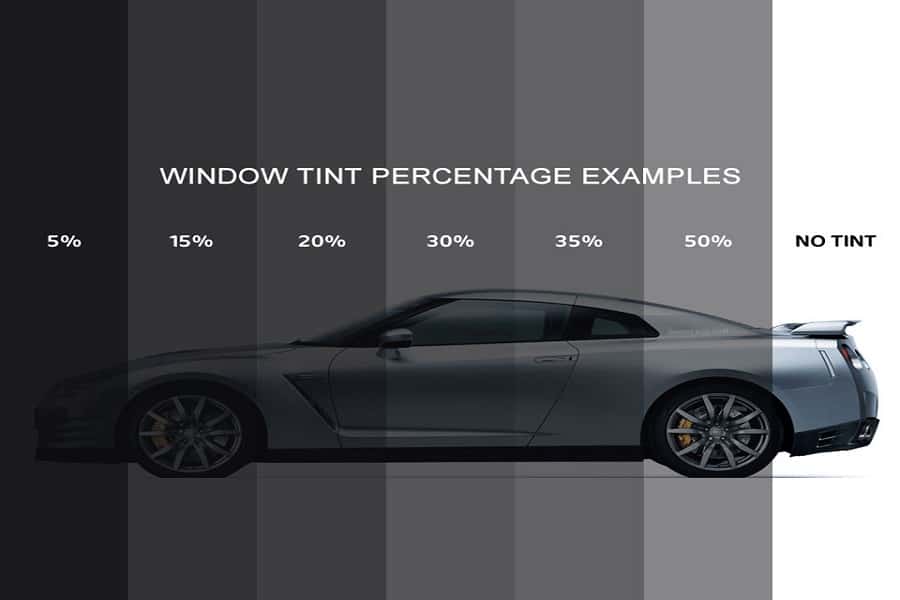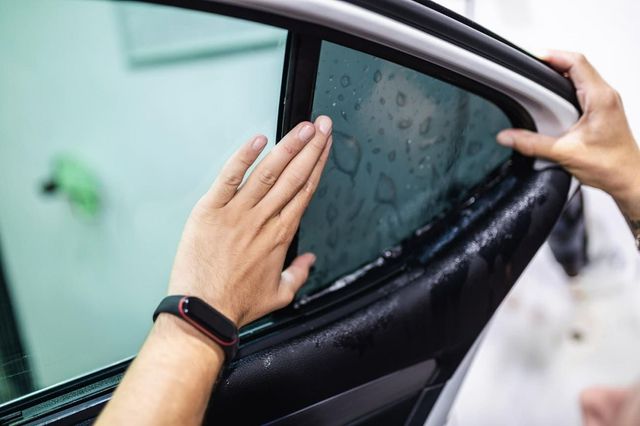Window Tinting Options: Discover the Right Shade for Your Design and Requirements
Choosing the appropriate window tint for your vehicle entails a cautious consideration of various variables, including personal visual appeals, useful demands, and legal constraints. With choices ranging from light tintss that provide minimal personal privacy to darker tones that enhance privacy, the options can be overwhelming.
Understanding Window Tinting Levels
When considering window tinting, it is important to understand the numerous levels of tint offered, as they considerably affect both appearances and performance. Window tinting is categorized based upon Visible Light Transmission (VLT) portions, which indicate the quantity of light enabled to pass with the glass. The VLT portion can vary from extremely light (over 70%) to really dark (listed below 5%)
The primary levels of tint include clear, which supplies UV protection without changing visibility; light tint (over 50% VLT), which slightly minimizes glare while preserving visibility; medium tint (around 35% VLT), striking a balance between personal privacy and light transmission; and dark tint (listed below 20% VLT), providing considerable personal privacy and warm decrease however limiting outside presence.
Understanding these levels is essential as they can affect driving safety, legal conformity, and individual convenience. Additionally, regional guidelines often dictate allowable tint levels, varying by state or town. As a result, prior to picking a color, it is advisable to research and guarantee adherence to these guidelines while taking into consideration individual choices for design and functional benefits.
Popular Tint Shades Explained

One of the most prominent alternatives is the traditional dark tint, typically varying from 20% to 5% VLT (Noticeable Light Transmission) This shade uses optimum privacy and a streamlined, sophisticated look. It properly blocks UV rays and warm, making it suitable for sunny climates, though it might restrict visibility at night.
Alternatively, lighter tones such as 35% or 50% VLT provide a much more refined look while still offering some degree of privacy. These tones are excellent for those seeking a balance between appearances and functionality, as they enable much better exposure and follow various legal requirements.
Another emerging choice is the ceramic tint, which can come in a range of shades - window tinting. It uses remarkable warmth denial and UV protection without considerably changing the car's look

Lawful Regulations for Window Tinting
Understanding the legal regulations bordering window tinting is important for lorry owners aiming to customize their autos. Each state in the U.S. has details legislations controling the darkness or lightness of window tintss, frequently determined by Visible Light Transmission (VLT) percent. VLT refers to the amount of light that can pass via the film and the glass incorporated.
In numerous states, laws dictate different VLT portions for numerous windowss, including front windscreens, side windowss, and rear windowss. For example, some states might permit a tint of 70% VLT for windshields while permitting darker tintss for back windowss. Additionally, specific states have limitations on reflective tintss, which can develop glare for other chauffeurs.
Failure to follow these laws can result in penalties, mandated elimination of the tint, and raised insurance premiums. Automobile proprietors need to consult local legislations or state DMV sites to ensure they are within legal limitations prior to waging installment. Understanding these policies not only assists prevent lawful effects however also makes sure a risk-free driving experience.
Advantages of Various Tint Products
Checking out the advantages of numerous tint products discloses substantial benefits that can boost both the capability and visual allure of a lorry. Each material uses unique qualities suited to specific needs and choices.
Dyeded window films are popular for their price and capability to minimize glare. They effectively block UV rays, protecting the inside from fading, though they might not offer the highest heat denial. Metalized films, on the other hand, deal remarkable heat decrease and UV security due to their reflective residential properties. They can improve privacy and security yet may hinder digital signals.
Ceramic window films represent a premium alternative, supplying extraordinary warmth being rejected while keeping exposure. They are non-metallic, hence preventing any kind of signal disruption, and are extremely durable, withstanding scrapes and fading in time. In here addition, ceramic films do not include dyes, making certain a longer-lasting appearance.
Finally, crossbreed films integrate components from dyeded and metalized options, using a well balanced performance in terms of warm rejection, glow reduction, and cost. Each tint product serves unique functions, permitting vehicle owners to select the most effective suitable for their lifestyle and aesthetic preferences, inevitably boosting their driving experience.
Choosing the Right Tint for You
Finding the right window tint includes taking into consideration various factors, including personal preferences, automobile kind, and neighborhood laws. First, assess your personal style and preferred level of personal privacy, as these will certainly assist your selection of tint shade. Darker tintss give boosted personal privacy but may not be suitable for all motorists, specifically those that like an even more open feeling inside their automobile.
Next, consider your car type, as the shapes and size of windowss can affect the performance of particular tintss. Bigger windowss may profit from reflective tintss that minimize glare while smaller windowss may be much more fit to dyeded films that supply refined aesthetic appeals.
In addition, it's vital to inspect local guidelines concerning window tinting. Numerous states enforce limitations on the permitted darkness and reflectivity, particularly for front windowss. Compliance with these regulations is vital to make certain and prevent fines security.
Lastly, review the tint product that best fits your demands. Options consist of dyeded, metalized, ceramic, and hybrid films, each offering unique advantages associating with warm denial, UV protection, and longevity. By thinking about these variables, you can confidently select a home window tint that aligns with your style and useful requirements.
Final Thought
In verdict, selecting the ideal window tint calls for mindful consideration of different aspects, consisting of VLT percentages, local laws, and the desired aesthetic. Various tint products supply unique advantages that can boost vehicle comfort and protection. By completely comprehending the readily available options and straightening them with individual preferences and useful requirements, one can attain an optimal balance in between design and capability in window tinting selections.
Picking the appropriate window tint for your lorry entails a mindful factor to consider of numerous variables, consisting of individual aesthetics, functional needs, and lawful constraints. Each state in the United state has details regulations regulating the darkness or lightness of window tintss, often gauged by Visible Light Transmission (VLT) portion. Some states may allow Read More Here a color of 70% VLT view it now for windscreens while permitting darker tintss for back windowss.Discovering the right window tint entails taking into consideration numerous aspects, including personal choices, automobile type, and local laws.In verdict, choosing the suitable window tint needs careful factor to consider of different elements, including VLT percents, regional laws, and the wanted visual.